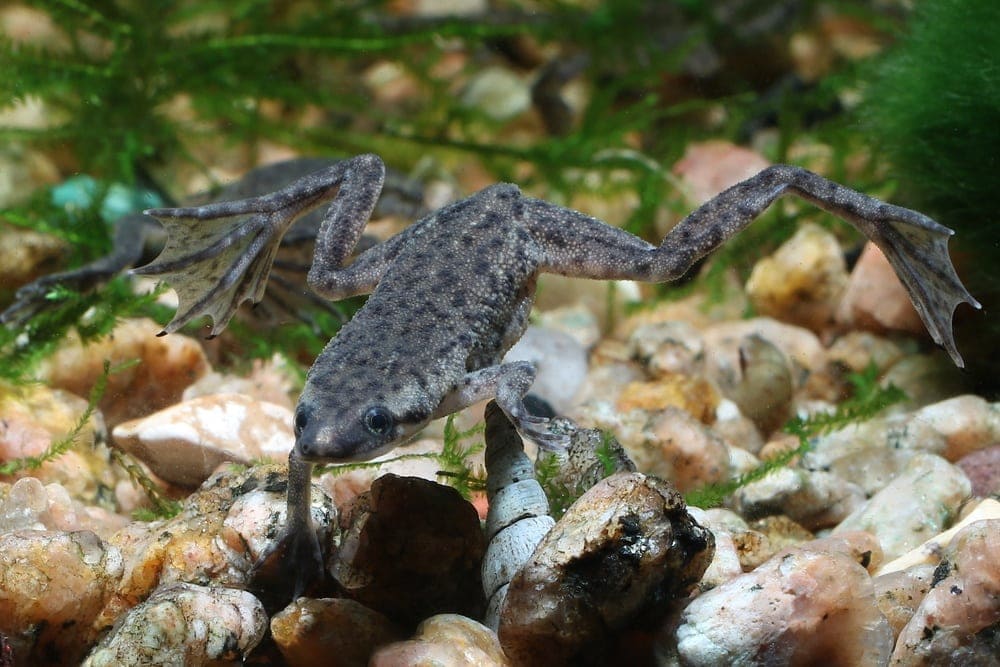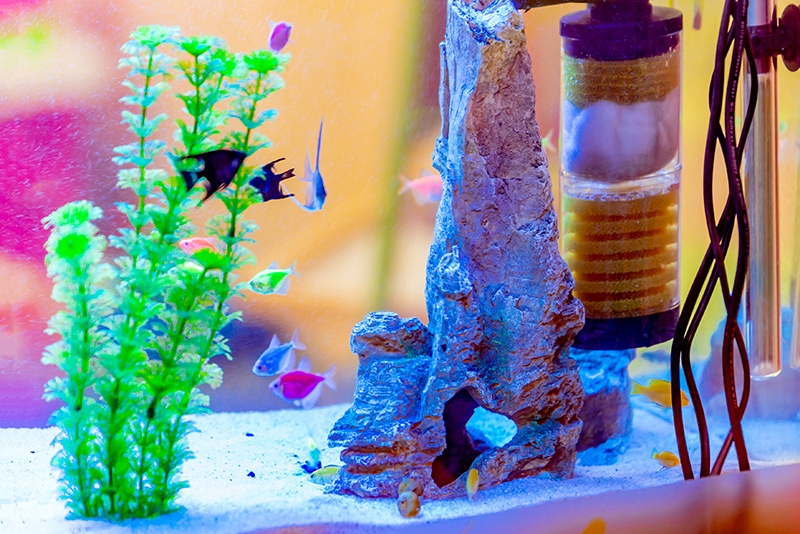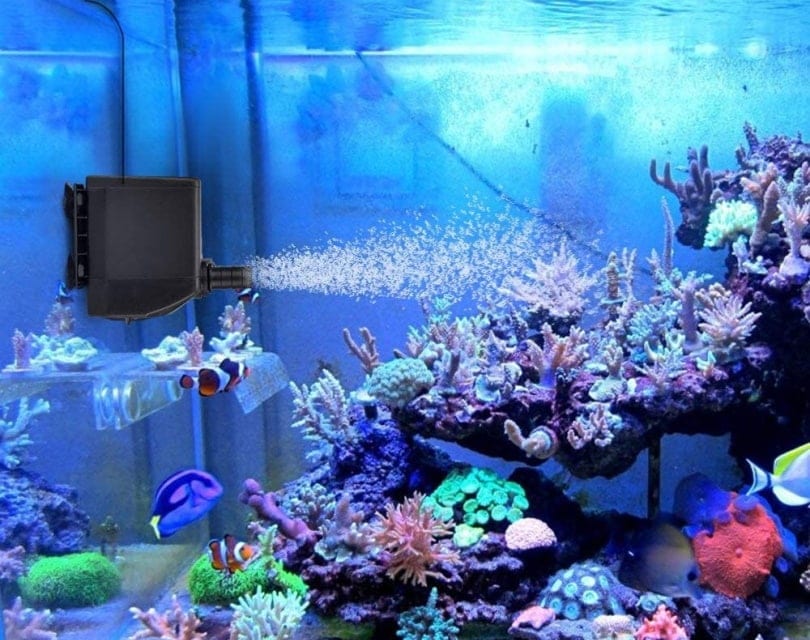How Does an Under-Gravel Filter Work? Types, Pros, Cons, & FAQ
Updated on
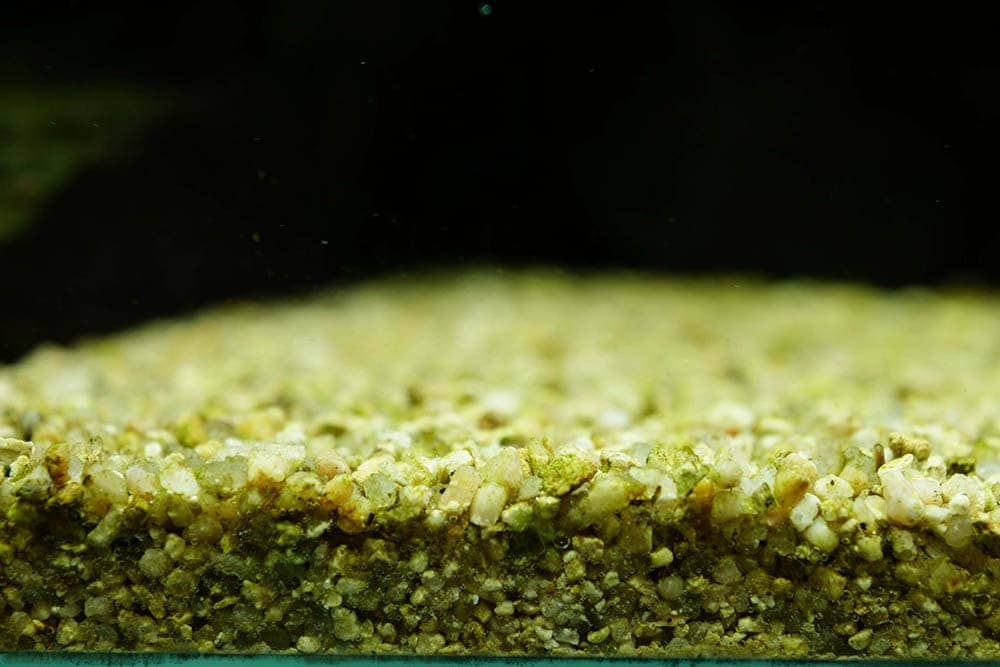
Filters are a vital component for aquariums and perhaps one of the most important tools. There are many different filters available to suit different types of aquariums, regardless of their size and overall appearance. Filters help keep the water clean and moving while reducing the accumulation of dirt and debris. They generally offer one or more types of filtration, such as biological, mechanical, or chemical.
Under-gravel filters have been around for decades, and they are one of the first filters ever created for aquariums. Although under-gravel filters have lost their popularity throughout the years, many people still use these filters because of their benefits in aquariums.
How Does It Work?
An under-gravel filter is a type of bottom filtration system used in various aquariums. It works by trapping particles in the water while offering a large surface area for beneficial bacteria to flourish. under-gravel filters usually offer mechanical and biological filtration.
An under-gravel filter is placed at the bottom of an empty aquarium and a gravel substrate is placed over the bottom grid. The grid consists of various holes and slits that the water passes through. A filter pad or mesh is placed under the grid to trap visible water particles. One to four transparent tubes are placed along the grid and extend past the substrate to the top of the aquarium. The tubes contain air stones that produce water currents to pull water through the filter’s components.
One part of the tubing is attached by airline tubing to a power source, such as a power filter, air pump, and canister filter that supplies air to the filter. A second airline tube should be attached to the intake valve on the grid. When air is pushed into the tube, water is forced through the substrate and the bottom grid, trapping pollutants like food debris and poop. Fresh and filtered water is then returned from the outlet tube or powerhead and back into the aquarium. This cycle repeats continuously both day and night to prevent the aquarium from becoming stagnant and polluted from waste products.
Under gravel filters usually produce bubbles from the outlet tube which helps aerate the water by creating surface movement. Some aquarists prefer to attach a powerhead to the under gravel filter to encourage better water circulation.
When used correctly, under-gravel filters are a reliable method of filtration. Certain under-gravel filters can even be hooked up to other types of filters.
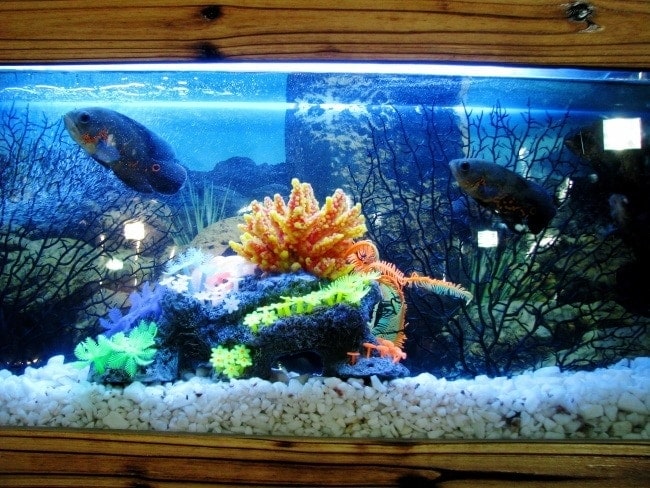
What Are the Different Types of Under gravel Filters?
Under gravel filters can vary in size, color, and shape, to appeal to aquarists who keep different types of aquariums.
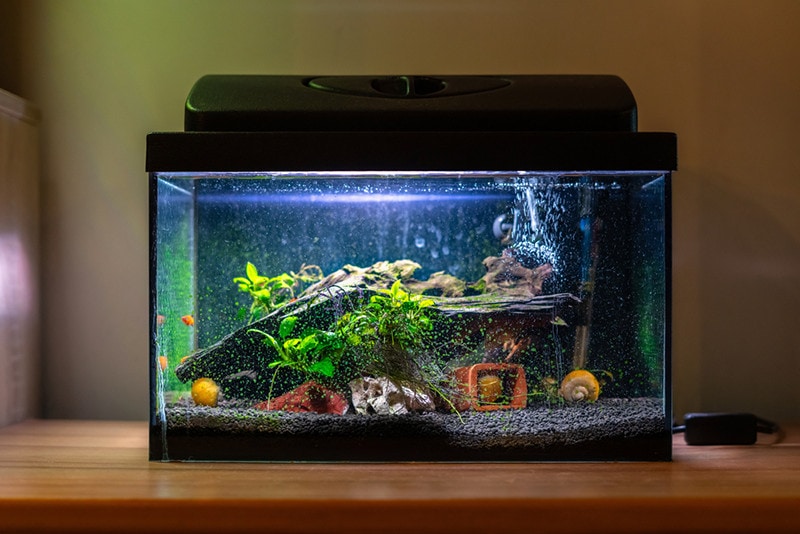
Standard under-gravel Filter
A standard under-gravel filter is the most common and affordable type. They are typically rectangular and can be found in different sizes. Some under-gravel filters are small and created for tanks under 10 gallons in size, while others are large enough to filter tanks of up to 125 gallons. Regardless, each under-gravel filter works similarly.
under gravel Filter with Powerhead
under gravel filters can be purchased with a powerhead to enhance water circulation abilities. under gravel filters are not one of the strongest filters, so placing a compatible powerhead helps increase the water flow. This type of under gravel filter is recommended for fish species that need strong water movement and aeration. A powerhead is useful for tropical aquariums since it keeps the heated water circulating throughout. This helps prevent cold and warm spots in the aquarium, which can be stressful for fish.
Circular under-gravel Filter
Some smaller under-gravel filters have been created in a circular shape so that they can be used in fishbowls. under-gravel filters work well for bowls since most top filters cannot be attached to the bowl’s rim. They also take up less space in a bowl than a standard top filter, while effectively keeping the bowl’s water filtered.
3-Stage Filtration under-gravel Filter
Most under-gravel filters only offer mechanical and biological filtration. However, there are some that have cartridges for filter media to offer chemical filtration. These cartridges can fit activated charcoal, bio balls, filter floss, and other small filter media. Therefore, 3-stage under-gravel filters remove visible water particles (mechanical), convert ammonia to nitrates (biological), and remove toxins and pollutants using filter media (chemical).

Where Is It Used?
under gravel filters can be used to filter different aquariums, such as freshwater, brackish, and marine. It is better suited to fit standard rectangular fish tanks, although it is possible to fit them into bowls or even square tanks.
under gravel filters can be used alongside or in replacement of top filters, like hang-on-backs (HOB) and sponge filters. Running both an under gravel and top filter in an aquarium improves its filtering abilities.
You might choose to use an under-gravel filter because you like its discreet look and effectiveness at filtering your aquarium’s water. These filters can be used to filter the water by offering a large surface area below the gravel for beneficial bacteria to form. This aerobic beneficial bacteria forms from the nitrogen cycle and converts the ammonia from fish waste into a less toxic form known as nitrates. The grid of the under-gravel filters helps trap visible pollutants in the water below the substrate which keeps the water clear. Any trapped pollutants can be removed using a gravel vacuum once or twice a week.
Advantages of under-gravel Filters
- Relatively inexpensive
- Space efficient
- A reliable method of filtration that has been used for decades
- Effectively removes, traps, and processes water pollutants
- Discreet appearance
- Easy to set up
- Offers both mechanical and biological filtration
- Provides a large surface area for beneficial bacteria to colonize
- Aerates and circulates the aquarium water
The main advantages of an under-gravel filter are the price, methods of filtration, and easy setup. Under-gravel filters can also be modified to suit the needs of your aquarium and adjust the output flow or filtration methods.
Disadvantages of under-gravel Filters
- Can be loud
- Large particles and gunk can clog the filter
- Better suited for aquariums with a gravel-like substrate rather than sand
- The movement of the bottom grid may stir up dirt, which may cloud the water
- Difficult to clean without disturbing the entire aquarium’s setup
- May be difficult to maintain in heavily planted aquariums
- Not all under-gravel filters offer chemical filtration
If you use a loud air pump to power the under-gravel filter, you might find that it is quite loud. The sound of the motor and vibrations can distract you if you choose to work or sleep in the same room as the aquarium. Furthermore, most under-gravel filters work best when a gravel-like substrate is placed on top. It can be difficult to run an under-gravel filter if you are using a sandy substrate.
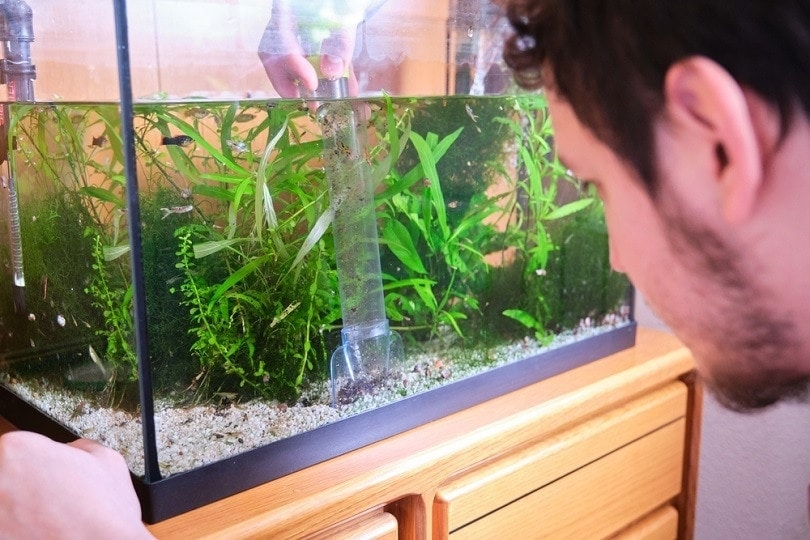
Frequently Asked Questions (FAQs)
1. Can under-gravel filters be used in saltwater aquariums?
Yes, under-gravel filters can be a reliable and effective way to filter your saltwater aquarium. They have been a top choice for years and can safely filter different types of aquariums regardless of the salinity content.
2. Can you use under-gravel filters in planted aquariums?
Although it is possible to use under-gravel filters in planted aquariums, it is not a good idea. Live plants usually need a proper growth medium, which is a sandy type of substrate. Most under-gravel filters are not compatible with sandy substrates since they can prevent the filter from working normally. The sand prevents water from passing through effectively, causing clogging issues and poor filtration. Sand can also get trapped in the filter and be difficult to clean.
3. Do under-gravel filters work well for goldfish tanks?
under gravel filters can be safely used in goldfish tanks. However, since goldfish are messy fish with a high bioload, you might want to run a top filter as well. Most under gravel filters are not strong enough to process the amount of waste produced by large goldfish.
4. How often do under-gravel filters need to be cleaned?
How often you clean an under-gravel filter depends on several factors.
- The type of under-gravel filter
- The aquariums bioload
- The size and type of fish or invertebrate species
- How often the aquarium is cleaned
- The methods of filtration it offers
Generally, under-gravel filters need to be cleaned every 1–3 months. If the aquarium is understocked with low-bioload fish, you don’t have to clean the under-gravel filter often. However, if it is moderately overstocked with fish, you may need to clean it more frequently. You don’t need to worry about removing the slimy gunk that accumulates on your under-gravel filter. This gunk is a biofilm that is beneficial to the aquarium even though it doesn’t look very appealing. If your under-gravel filter has a cartridge for filter media, the media will need to be replaced every couple of weeks.
The most accurate way to determine whether your under-gravel filter needs cleaning is by checking how good the water flow is. If you notice the flow is slower than normal, it means that debris is clogging it and the filter needs to be cleaned out. The mesh or filter pads can be rinsed in old aquarium water or replaced when necessary.
Conclusion
under gravel filters are an affordable and reliable way to filter aquariums. When set up correctly, under-gravel filters are relatively easy to maintain and do their job well. They are available in various sizes and can be modified to improve their filtration methods. under-gravel filters work best in aquariums with a gravel-like substrate, rather than a sandy one.
Although most under-gravel filters only offer mechanical and biological filtration, some offer chemical filtration too. Keep in mind that you will need to remove most of the substrate when you clean or fix your under-gravel filter, which can be tedious.
You Might Also Be Interested In:
Featured Image Credit: Pavaphon Supanantananont, Shutterstock


